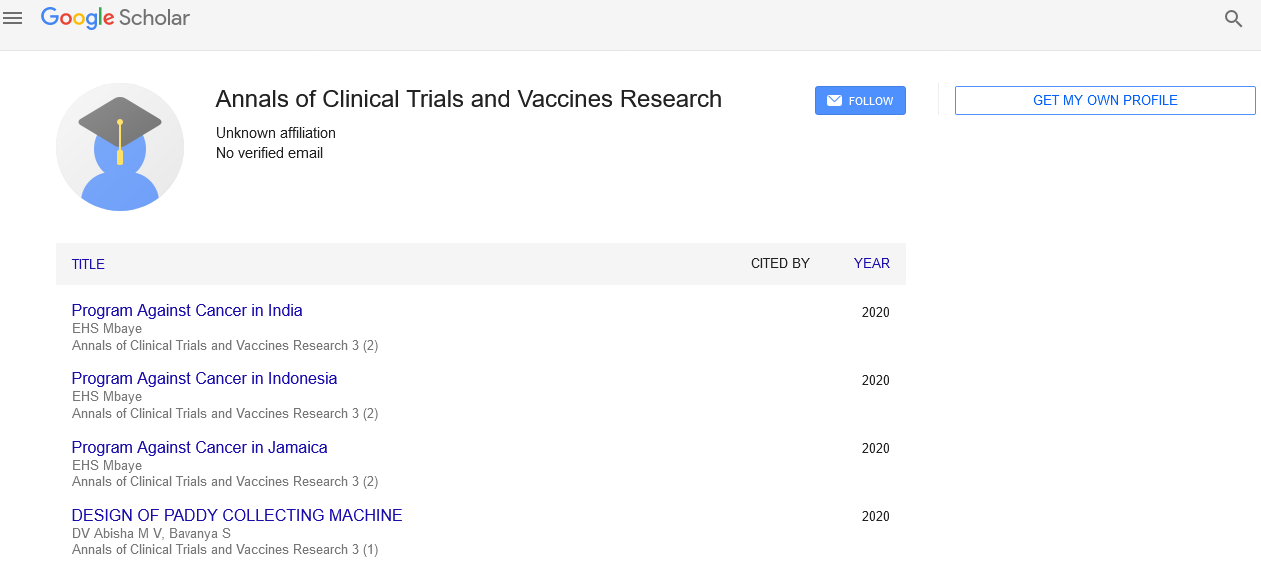Short Article - Annals of Clinical Trials and Vaccines Research (2020) Volume 3, Issue 3
Importance of Surveillance and Vaccination for the Global Eradication of Poliomyelitis
Natalia Romanenkova, Maina Bichurina and Nadezhda Rozaeva
St Petersburg Pasteur Institute, Russia
Abstract
The key strategies of poliomyelitis eradication are: sensitive surveillance of Acute Flaccid Paralysis (AFP) with obligatory laboratory investigation of each case of paralysis; maintenance of vaccine coverage against poliomyelitis among children at 95% level; organization of mass campaigns of vaccination - National Immunization Days in polio endemic countries among children under five years in 2 rounds per year; organization of National/Subnational Immunization Days if after importation of wild poliovirus into polio free country there should arise its indigenous transmission and circulation among all the children under five years and other age groups wherein polio cases were revealed.
Poliomyelitis has been eradicated in the major part of the world, but the risk of importation of wild polioviruses into polio free countries remains. Epidemiological and virological surveillance of poliomyelitis and Acute Flaccid Paralysis (AFP) must be continued because wild polioviruses can be imported and circulate in polio free countries in case of low vaccine coverage of population. The objective of surveillance is to evaluate te possible circulation of imported wild polioviruses and vaccine-derived polioviruses with nucleotide substitutions. The detection of these pathogenic strains is based on the analysis of poliovirus strains isolated in the course of AFP surveillance using virological and molecular method techniques. Reemergence of poliomyelitis can compromise the Global Polio Eradication Initiative in the post-certification period.
The continuous danger of importation of wild polioviruses into polio-free countries remains until poliomyelitis is eradicated. In 2010 an important outbreak of poliomyelitis (458 laboratory confirmed cases and 29 lethal cases) caused by imported wild poliovirus occurred in Tajikistan which had previously been polio free. Sequencing of the VP1 region of virus revealed that the causative agent of the outbreak in Tajikistan was closely related to wild poliovirus of type 1 previously isolated in India. The spread of imported wild poliovirus in Tajikistan became possible because of the vaccination gap. Vaccine coverage of children with oral polio vaccine had dramatically decreased. Wild poliovirus of type 1 (WPV1), the causative agent of poliomyelitis outbreak in Tajikistan, was imported into Russia and was isolated from poliomyelitis cases and healthy children among migrants from Tajikistan. In Saint-Petersburg WHO Subnational Polio Laboratory we isolated wild poliovirus of type 1 from three healthy Tajik children who came to Russia. Two children received only one dose of oral polio vaccine. One child excreted WPV1 for more than a month in spite of 5 doses of oral polio vaccine. In order to avoid the spread of WPV1 in the nursery school which this child frequented 200 children and the personnel of the school were supplementary immunized. Our serological study showed that among migrants’ children 13% were seronegative to polioviruses of all three types while among resident children in the North-West of Russia only 0, 4% of children were seronegative to three polioviruses.
Other risks of Polio Eradication Initiative are: circulation of VaccineDerived Polioviruses (VDPV) with nucleotide substitutions and/or recombinant profile, VDPV excreted by the persons with immunodeficiency and appearance of Vaccine Associated Paralytic Poliomyelitis (VAPP).
Because of the great number of vaccinated with OPV children each nonvaccinated child has the chance to come in contact with one or several recently vaccinated children who excrete vaccine or vaccine-derived polioviruses. Since the critical nucleotide positions may be involved in the mutation mechanism this may lead to the suppression of attenuation. So there is a risk that the viruses excreted by vaccinated children will have a lower degree of attenuation than the original Sabin strains. The existence of non-vaccinated children even in a small number supports the circulation of VDPV strains. The modified poliovirus strains when attacking susceptible non-immunised children may cause in some of them the paralytic disease and may undergo further modifications. St. Petersburg Polio laboratory investigated the samples from 1257 cases of acute flaccid paralysis registered on 14 territories of Russia in 1998- 2017, 15 cases were classified as vaccine-associated paralytic poliomyelitis. From them 9 patients were unvaccinated and 6 children received from one to four doses of oral poliomyelitis vaccine.
In our study using the multiple restriction fragment length polymorphism as a screening method we revealed five poliovirus strains of vaccine origin with significant number of nucleotide substitutions. Two strains were isolated from VAPP cases, two strains – from contacts with VAPP and one – from AFP case. The strains had from 0, 7% till 1, 1% of nucleotide substitutions and 2-4 amino acid substitutions in VP1 genomic region. Thus we showed the possible circulation of VDPV in the NorthWest of Russia among well immunized children’s population.
The transmission of pathogenic revertant poliovirus of type 2 from the unvaccinated immunodeficient paralytic patient with VAPP to four healthy contacts in a hospital illustrated the emergence of VDPV with increased transmissibility. Three children among the contacts were unvaccinated. From all five children we isolated polioviruses of type 2 which had at least one neurovirulent nucleotide substitution at VP1 genomic region. The child with VAPP excreted revertant poliovirus of type 2 during 78 days and had residual paralysis, the antibodies titers against this poliovirus increased four-fold on the 21st day. The same poliovirus was isolated from sewage water of the hospital. Thus we showed the possibility of limited spread of VDPV.
We isolated the vaccine-derived poliovirus of type 1 with 0, 9% of nucleotide substitutions in the genomic region VP1 from the unvaccinated patient with VAPP who had been in close contact with several recently vaccinated children in the hospital where he stayed for more than a month because of the respiratory disease before the onset of paralysis. The child had residual paralysis and the four-fold increase of the antibodies titers against poliovirus of type 1.
The vaccine-derived poliovirus of type 3 which displayed 1, 1% nucleotide substitutions in the genomic region VP1 was isolated from a patient with VAPP. The paralysis appeared after the first dose of OPV, but the case was missed, the child was hospitalised only in 2 months after receiving the second dose. The child had residual paralysis; he excreted poliovirus of type 3 during 45 days after the second dose and 140 days after the first dose of oral polio vaccine.

